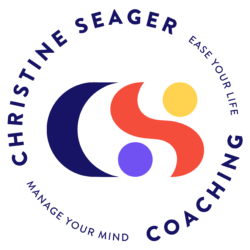Have you ever walked away from feedback—no matter how “constructive” it was—feeling like you got punched in the gut?
You’re not alone.
Negative feedback has a way of getting under our skin. We take it personally.
We spiral.
We make it mean so much more than it needs to.
We tell ourselves:
“I’m so dumb.”
“I’ll never be successful.”
“This isn’t working.”
“They don’t get me.”
And while the words themselves might sting, we’re the ones beating ourselves up in the aftermath.
But what if you could hear feedback—even the tough stuff—and handle it with grace?
No spiraling. No shame. No making it mean you’re somehow not good enough.
Here’s how:
Step 1: Stop & Take a Beat. Then Respond.
You don’t need to react immediately. Give yourself a moment.
Choose a simple phrase (or two) to have in your back pocket:
- “Thank you. I’ll take that under consideration.”
- “I see what you’re saying. I’ll think about that for next time.”
- “OK, thank you.”
That’s it.
You can respond respectfully without over-explaining, defending, or making it awkward.
Example:
Your manager says:
“I think your documentation could be more thorough.”
Instead of panicking or apologizing, you calmly say:
“Thanks for the feedback. I’ll keep that in mind.”
That’s all you need in the moment. You can process it later.
Step 2: Process It—When You’re Ready
When you have some time to think, ask yourself:
- Is there any truth here?
- Can I see their perspective, even if I don’t fully agree?
- Do I want to make any changes based on this feedback?
- Is there something to learn here?
Sometimes feedback shines a light on a skill or area you want to improve.
Example:
Feedback: “You didn’t seem prepared for that patient handoff.”
Your first reaction might be frustration.
But when you step back, you might realize:
- Were you as prepared as you wanted to be?
- What can you learn to feel more confident next time?
Maybe it’s creating a checklist or practicing a quick summary for each patient.
Turning feedback into a learning opportunity puts you back in control.
Learning changes frustration into growth.
Step 3: Break It Down
Here’s where you separate what’s real from what’s drama in your mind.
- What are the facts?
(What exactly was said? What specifically happened?) - What are your emotions about those facts?
(Upset, ashamed, annoyed, embarrassed?) - What thoughts are causing those emotions?
(What are you making this mean about you?)
Example:
Feedback: “That IV placement took too long.”
- Fact: It took a half hour.
- Emotion: Frustrated, embarrassed.
- Thought: “I’m so bad at this. I’ll never get better.”
Step 4: Challenge the Thought
Is that thought true?
How could the opposite be true?
Find evidence to support it.
Example:
Thought: “I’m terrible at placing IVs.”
Ask:
- Is it really true? (No. Most of the time, I place them quickly and effectively.)
- Could the opposite be true? (I’m learning. Everyone has off days. I’ve done this well many times before.)
Final Thoughts: Feedback Doesn’t Define You
Feedback is data. It’s information—not a judgment of your worth.
When you stop taking it personally and start handling it with grace, you stay in control.
- You decide what’s worth keeping.
- You decide what to improve.
- You decide what to let go.
And here’s the magic: Feedback can actually help you grow when you allow it.
Are you ready to start handling feedback differently?
If you’re tired of spiraling every time someone shares a critique, let’s talk.
Book a complimentary consultation, and we’ll work on tools to help you feel confident, calm, and in control—no matter what’s said.
Reminder: as part of the benefits offered at Logan Health, employees get free coaching sessions. You can book a coaching session here.
P.S. Liked what you read? Join my email list, where I dive deeper into these concepts and teach you HOW to put them into practice in your everyday life. And don’t forget to follow me on Instagram (@christineseager_) or Facebook (@seager.christine), where I share both teaching moments and real-life examples of this work in action.
